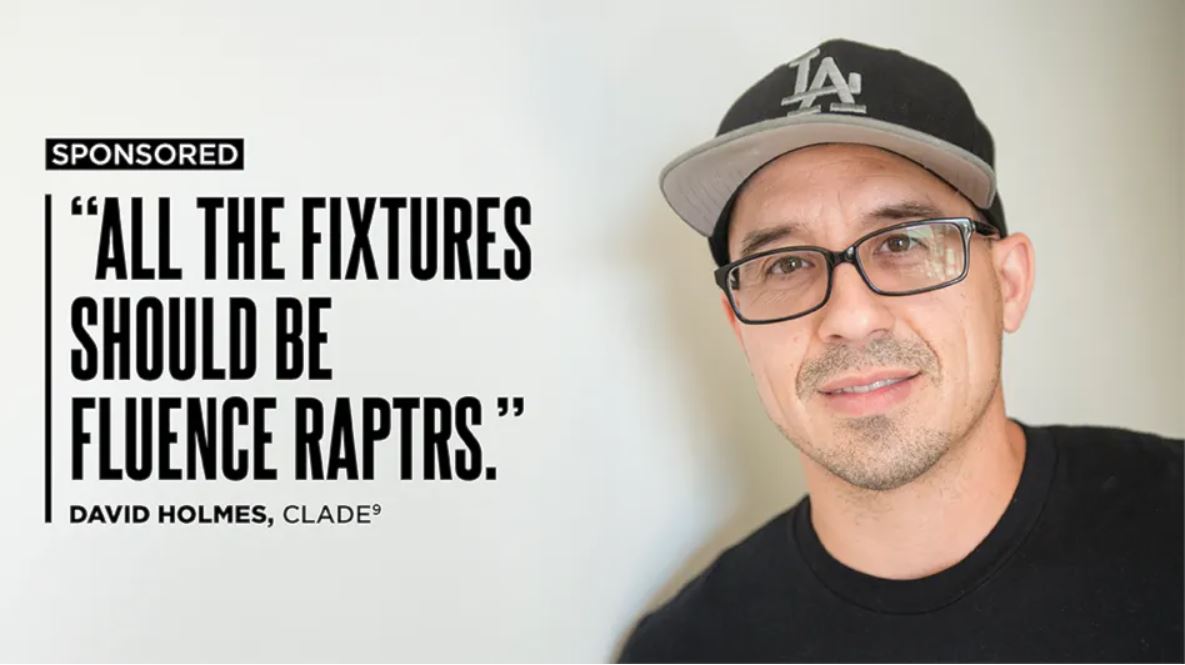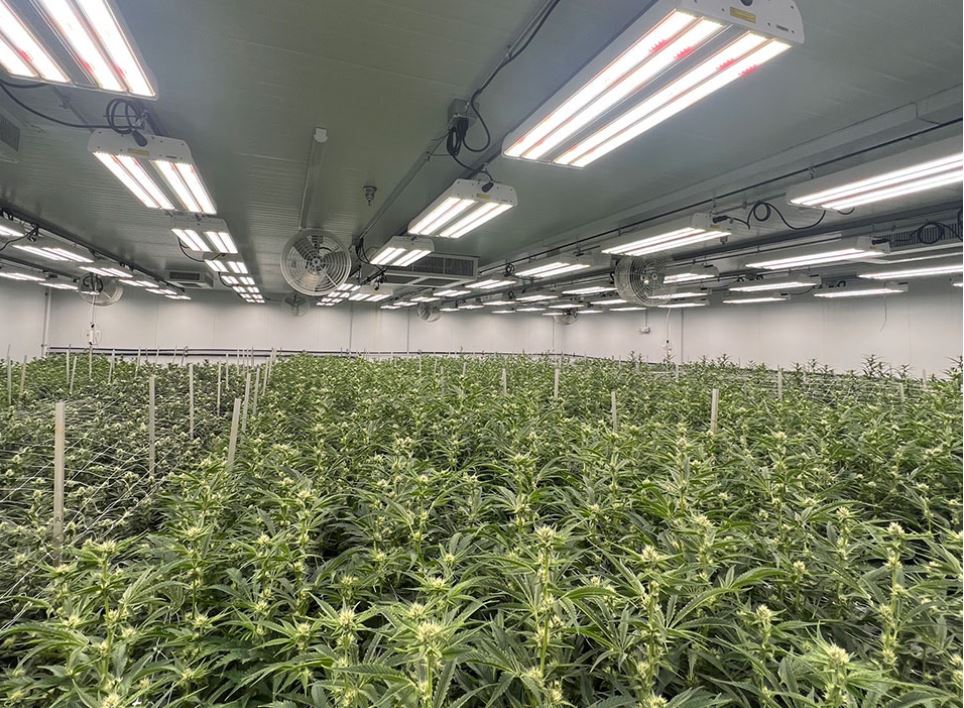
For the past 25 years, David Holmes has been growing cannabis indoors and has experienced firsthand the peaks and valleys of California’s cannabis market.
Widely recognized in the industry as an expert in his craft, Holmes has successfully scaled his cultivation from much smaller warehouses and garages as a pioneer of California’s gray market to now operating several thousand square feet of canopy in facilities in Los Angeles and Las Vegas.
The well-known LA-based cultivator, CEO and founder of Clade9 specializes in premium flower that has attracted a loyal following of discerning connoisseurs. Quality is top priority, especially in California’s increasingly competitive and challenging cannabis landscape.
“The quality is such a huge part of your success here. You can't just grow really bad flower; you're not going to survive,” says Holmes, who operates a 17,000-square-foot facility with 6,000 square feet of canopy in LA.
Despite being the largest adult-use cannabis market in the U.S., some licensed operators are struggling in California as prices continue to compress, even for premium product, in addition to the tax burdens, lack of capital and high interest rates cannabis entrepreneurs face.
“When the value of your product is going down and you have a certain production footprint, the only way that you're going to increase your revenue is by increasing your yield,” Holmes says. “You're not going to be able to raise your prices right now.”
Holmes has always used high-pressure sodium (HPS) lights to power plant growth in the LA facility’s five flower rooms. Though he long considered upgrading to light-emitting diodes (LEDs), which he installed in clone and veg rooms when building out the LA facility, cost was a barrier.
But Holmes reached out to the Fluence team, who he had worked with to install SPYDR LEDs in his two-tier veg room and RAZRs in the clone room, to discuss retrofit options.
“We worked out a deal with Fluence, and we converted a 72-light HPS room in LA to 72 Fluence RAPTR [LEDs], which made it a lot easier because we didn't really need to add much infrastructure,” Holmes said, adding it only took a day for his team to swap the HPS lights for the LEDs, which they did while cleaning one flower room after harvest and preparing for the next cycle to keep on their regular, once-every-two-weeks harvest schedule. “We ran the first room, and the results blew us away.”

Fluence RAPTRs in Clade9's flower room. Photo courtesy of David Holmes.
First, the increase in yield was much higher than predicted. After just one harvest cycle with the new lights, Clade9 went from producing 180 pounds on average per room to generating 281 pounds.
“And the quality was really on par with the HPS. That was really important, because we have a very specific customer base, and they expect a certain quality, and the Fluence LEDs matched it,” Holmes says. “In some cases, it was even better, and the cannabinoid and terpenes were all on par. [Quality] wasn't a big concern because I had trialed LEDs at another facility and seen good results. It was more of a change in product compared to what we normally do. When you have customers that are buying HPS flower and you switch, even if it's as good, if it's slightly different, the consumer could pick up on it. So I was a little bit concerned on the nuances there.”
Holmes says the customer reception was positive, and now he is hoping to retrofit the rest of the facility with LEDs as soon as possible.
“We increased our yield by a hundred pounds. That basically covers the cost of the retrofit for the most part,” Holmes says. “If it's designed well to begin with, then the cost of the fixture is the main cost. Then you might have some other ancillary costs like adding dehumidification. Overall, your investment should be about one and a half to two harvests probably.
“It's a really quick ROI. It's a no-brainer. If you look at the data, you're just like, all the fixtures should be Fluence RAPTRs.”
Holmes says when he’s able to invest in more LEDs, he’ll continue to work with Fluence. The company has earned his business and his trust.
“I just think they have great quality fixtures. I think them being around for a while helps, because when you've been around a while, you make adjustments and you learn things,” Holmes says of the company that has served the cannabis industry for more than a decade. “They’re making adjustments that are smart and they have great support. The support is really important, especially for cultivators that don't have a lot of experience. Whether they're doing a conversion or they're just launching a facility for the first time, there's a lot of things that could go wrong in the design, in the planning. And so I think that support piece is really critical.”
Holmes says while Clade9 is dialed in when it comes to genetics, the environment and nutrients, the changes they made when installing LEDs were minor but made a big impact. He says his experience coupled with support from Fluence’s horticulture specialists, who stepped in to help Clade9 optimize their growing strategy and take full advantage of the LEDs, allowed him to achieve significant yield gains as quickly as they did.
“For us, it was real little things like an increase in our magnesium concentration. We added a cal-mag foliar, and then we started looking more closely at the leaf temp for VPD [vapor pressure deficit] because the leaf temp variation is different with HPS and LED. They might seem like really small things, but they make huge differences in terms of yield and quality,” Holmes says. “If you have great fixtures, which Fluence does, and they have awesome support, it just makes you way better, quicker. But if you're just an LED company and you don't have that support, the cultivators are on their own trying to figure out how to do that implementation or make those changes. It's going to take you some time.”
Holmes recommends cultivators who are exploring converting facilities to LED technology keep a few things in mind to be successful before, during and after the grow cycle.
“Understand where you are first and have a good idea of what the retrofit will mean. For us, the things we were thinking about before were, will we have to increase irrigation? Will the environment change dramatically? Are we set up to combat an increase in transpiration and humidity? And the cost, obviously, of the fixtures. Can you afford to switch out the fixtures? They’re definitely more expensive than HPS, but at the same time, they’re really reasonable. And now there's rebates for LEDs in a lot of places.”
They also had to figure out how they were going to process, store and sell all the extra flower they grew—a great problem to have.

After impressive quality and yield results from the first harvest using Fluence RAPTRs, Clade9 plans to install the company's LEDs in all flower rooms across its California facility. Photo courtesy of David Holmes.
“Our goal is to get to a hundred percent retail distribution, which is very difficult to do in California. Our vault is pretty tight. When we harvested that room, we had a bunch of extra weight, and we didn't have the retail outlets right away. You talk to anybody in California, it's going to be impossible to put a hundred extra pounds into retail right away,” Holmes says. “But it allowed us to sell a lot more bulk. And that really helped with cash flow. If you have quality flower, it's just a phone call.”
With yield increases of 30% to 40%, business operators will have to account for post-harvest demands, including trimming capacity, additional dehumidification in the drying room, vault size, packaging and labeling materials and labor required if preparing the flower for retail.
Holmes also anticipates Clade9 will need to upgrade some of its HVAC-D capability to better complement the new lights and add additional dehumidification, but that the investment would be quickly paid off with the results they are seeing. In early February, Clade9 was finishing the second cycle in the flower room equipped with LEDs.
“We're expecting the yields to be really large this time as well. It has been a really good experience with that first retrofit,” he says. “We're looking forward to implementing those fixtures across all the rooms at facility."
TrendForce 2024 Global LED Lighting Market Analysis
Release Date: 01 February / 31 July 2024
Language: Traditional Chinese / English
File format: PDF and EXCEL
Number of pages: 100 (in each publication)
|
If you would like to know more details , please contact:
|











